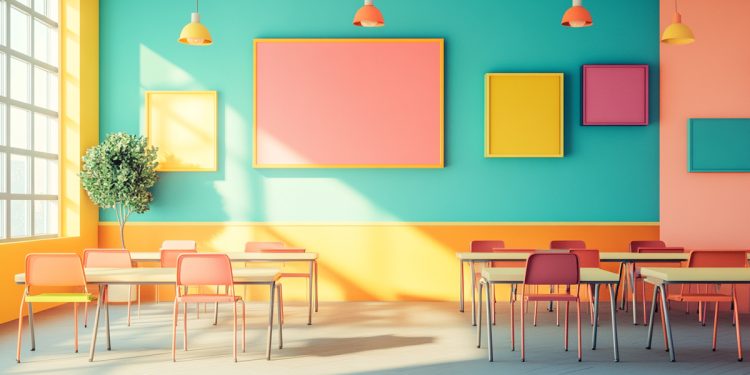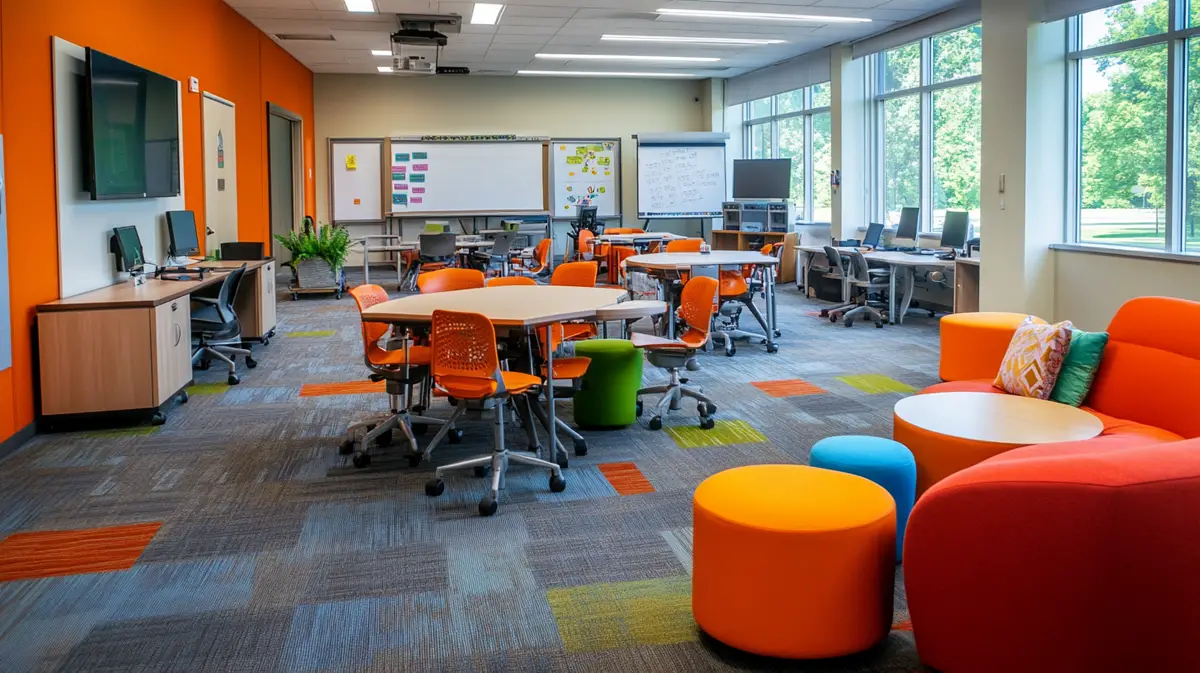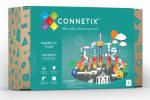Redesign Your Classroom in 8 Steps for Better Engagement and Learning

Creating an engaging and dynamic classroom environment is key to fostering a love of learning and encouraging student participation. A well-designed classroom can enhance student engagement, boost motivation, and create an atmosphere that promotes creativity and collaboration. Whether you’re a teacher looking to refresh your space or you’re setting up a new classroom from scratch, the physical layout and organization play a crucial role in how students interact with the content, each other, and you.
In this blog post, we’ll explore 8 simple yet effective steps you can take to redesign your classroom to support better engagement, learning, and overall student success. From rearranging furniture to incorporating interactive tools, these tips will help transform your classroom into a space that inspires and empowers both you and your students.
Assess Your Classroom’s Current Layout and Functionality
Before diving into the redesign process, it’s essential to evaluate your current classroom setup. Take a step back and consider how the space currently supports or hinders student engagement. Are students sitting in rows, facing the front? This traditional layout may limit collaboration and interaction. Consider how the physical arrangement influences student movement and participation. Reflect on how the environment influences both student focus and teacher-student interactions.
Once you’ve identified areas for improvement, start envisioning a more flexible layout that encourages group work, active learning, and engagement. A few simple adjustments could make all the difference in creating a more dynamic and inviting space.
Incorporate Flexible Furniture for Dynamic Learning Spaces
Furniture plays a vital role in creating an adaptable classroom. Traditional, stationary desks may not always support diverse learning styles or group activities. Redesigning your classroom with flexible furniture can drastically improve student interaction and engagement. For instance, you can find reliable school desks that are adjustable and movable. This allows students to rearrange their workspace depending on the task at hand.
Also, consider chairs with wheels, modular desks, or tables that can be easily moved to accommodate group projects or collaborative work. This type of furniture flexibility ensures that your classroom supports a variety of teaching methods and gives students the freedom to learn in a way that best suits them. Some students may also benefit from having a more personalized space where they can focus, such as when they need to do my math homework or work on individual assignments. This flexibility allows for a more comfortable and productive learning environment, helping students to stay focused and manage their workload effectively.
Create Defined Zones for Various Activities
One effective strategy for redesigning your classroom is to establish distinct zones that serve specific purposes. A reading corner, a group work area, and a quiet zone for independent study all offer students a variety of spaces to engage in different activities. By physically separating these zones, you can guide student behavior and create a more focused environment for each type of activity.
Ensure each zone is equipped with the necessary tools and resources—such as bookshelves, whiteboards, or quiet study materials—so that students can easily access what they need to thrive. A well-planned zoning system enhances engagement by making the classroom feel more purposeful and organized.
Maximize Natural Light and Open Spaces
Lighting has a significant impact on mood and productivity. Bright, natural light can make your classroom feel more inviting and energizing, while dim or artificial lighting may lead to fatigue or disengagement. If possible, arrange desks near windows to let in as much natural light as possible. Incorporating natural elements, such as plants or nature-inspired decorations, can further contribute to a calm, creative, and positive atmosphere.
Open spaces free from clutter also help students feel more comfortable and allow for greater movement and interaction. An airy, well-lit environment fosters a positive, focused atmosphere that motivates students to participate actively in lessons and discussions.
Integrate Technology for Interactive Learning
When it comes to education trends, technology plays an essential role in engaging students and enhancing their learning experiences. Consider incorporating interactive tools such as smartboards, tablets, or classroom response systems into your redesign. These technologies not only facilitate student collaboration but also provide diverse ways for students to interact with content. A spokesperson for a leading local provider of PPA cover says, “The use of iPads in the classroom has revolutionised the way children are taught.“
Using digital platforms for quizzes, discussions, or multimedia presentations can make lessons more exciting and immersive. By integrating technology thoughtfully into your classroom design, you can cater to digital-native learners and create an environment that feels relevant to their world while supporting a variety of learning styles.
Incorporate Student-Centered Design Elements
Redesigning a classroom with the students in mind helps promote a sense of ownership and community. When possible, let students have input into the design process. For example, allow them to select artwork or decorate their learning spaces, ensuring the room reflects their interests and personalities.
Student-centered elements, such as personal lockers, bulletin boards for showcasing student work, and spaces for collaborative learning, help build a more inclusive classroom atmosphere. When students feel connected to their learning environment, they are more likely to feel engaged and motivated to participate. A classroom that reflects their voices also helps foster a sense of pride and belonging.
Use Colour and Aesthetics to Boost Learning and Focus
The colours and aesthetics of a classroom can influence student mood, behavior, and concentration. Bright colours like yellow and orange are often associated with energy and creativity, while cooler shades like blue and green can promote calm and focus. Consider using colour strategically in different parts of your classroom to create an environment that is both stimulating and conducive to learning.
Avoid overwhelming students with too many distracting colours or clutter. Instead, focus on creating a balanced aesthetic that uses colour to emphasize key areas of the room, such as reading zones or collaborative spaces. A thoughtful colour scheme can enhance student focus and contribute to a positive classroom environment.
Ensure Storage Solutions Are Accessible and Efficient
A well-organized classroom is key to promoting both engagement and efficiency. One common problem in many classrooms is clutter, which can hinder learning and distract students. To prevent this, ensure there is ample and easily accessible storage for materials, supplies, and student work. Use shelves, bins, or cubbies to organize resources and keep them out of sight when not in use.
The goal is to create a clutter-free environment where students can easily access what they need without distractions. Additionally, efficient storage solutions also help maintain a clean, organized classroom that fosters focus and ensures that your space remains functional for learning activities.
Redesigning your classroom is an investment in both student engagement and learning outcomes. By thoughtfully considering the layout, furniture, lighting, and technological tools, you create an environment that supports collaboration, creativity, and focus. A well-organized space that is tailored to the needs of your students can inspire enthusiasm and foster a deeper connection to the material. Small changes, such as adding flexible furniture or creating distinct learning zones, can have a significant impact on student participation and motivation. With these 8 steps, you’ll be on your way to building a classroom that truly enhances the learning experience for everyone.










